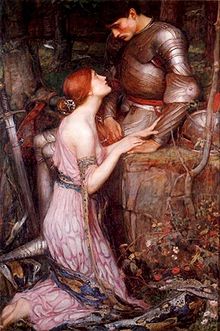
Back Médiévalisme French Medievalismo Italian Mediewalizm Polish Medievalismo Portuguese Медиевализм Russian

Medievalism is a system of belief and practice inspired by the Middle Ages of Europe, or by devotion to elements of that period, which have been expressed in areas such as architecture, literature, music, art, philosophy, scholarship, and various vehicles of popular culture.[1][2] Since the 17th century, a variety of movements have used the medieval period as a model or inspiration for creative activity, including Romanticism, the Gothic revival, the Pre-Raphaelite and Arts and Crafts movements, and neo-medievalism (a term often used interchangeably with medievalism). Historians have attempted to conceptualize the history of non-European countries in terms of medievalisms, but the approach has been controversial among scholars of Latin America, Africa, and Asia.[3]
- ^ J. Simpson; E. Weiner, eds. (1989). "Medievalism". Oxford English Dictionary (2nd ed.). Oxford: Oxford University Press.
- ^ D'Arcens, Louise (2016-03-02). The Cambridge Companion to Medievalism. Cambridge University Press. pp. 1–10. ISBN 978-1-316-54620-8.
- ^ Kathleen Davis and Nadia Altschul, eds. Medievalisms in the Postcolonial World: The Idea of "the Middle Ages" Outside Europe (2009)